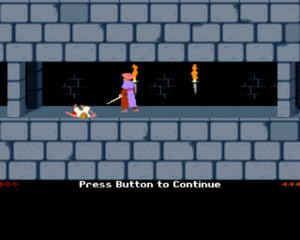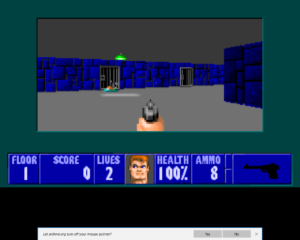The development of more interactive games seem to be a combination of the visual flexibility and variety of video games with the sense of visceral movement and activity of sport and other skill games. Seeing this early on, it would appear to mostly be a marketing ploy that was designed to convince people of the technological advance of entertainment. These systems though would often be found to have severe limitations, in which when the novelty of a system wore off it would often demonstrate to be more frustrating then fun. Early examples of this are systems like the Wii and Kinect, in which while the motion sensing technology is there it had flaws and limitations. While these motion sensing technologies at best can be fun party games, they become insufficient motivation for individual play.
This sort of frustration is usually enough to take a gamer out of a flow state that they might otherwise be able to achieve in a system with more tighter controls, and which would otherwise be more traditional with a general game controller or keyboard. Traditional games through the limitation of movement can actually be more immersive, this is due to the fact that by having an individual be put into a passive state they become centrally entrained in the input output system of the game. In this passive state of the player, all external input can be melted away so that the only thing that exists in the players phenomenology is themselves and the game; and even this can be melted in a singularity in more extreme cases.
An exception to this though might come from musical games, examples of this are Guitar Hero and Dance Dance Revolution. These games had controls that borrowed from arcade style play, and thus had more past work borrowed from them. The inclusion of music allows players to become naturally immersed in the game themselves, this can be seen anecdotally with the huge scene surrounding these dancing and musical instrument games. These games are often tighter then other ray based peripherals because they largely really on discrete trigger based input such as the pads on a dance mat.
With the fast rise of VR we see better implementation of interactive games. The key to this is the advance is the improved immersion of the systems. The VR system submerges the senses in a visual auditory environment mostly free from external noise. This combined with reasonably good peripherals comes together as a unique experience that can engage flow by tricking the senses and narrowing the attention indefinitely. The headset itself acts as a peripheral, where moving your head changes the game view itself closing the gap between interpretation of movement and actual movement. Many VR sets come with motion sensing peripherals for the limbs, these have been shown to be fairly in depth given advances in dual lighthouse techniques.
The development of AR to me is uncertain, because it necessitates the interaction of a visual virtual environment and visual input from the actual environment. Improvement upon development would probably be slower then in VR because of this fact. The success of Pokémon Go! may prove me wrong, that was a AR game so the key to AR might be in the mobile scene. If the AR system can be successfully integrated in our mobile tech then that suggests a huge future success for AR.



